Ideal Strategy for Healthcare Companies to be Doctor’s Best Partner
Due to the pandemic, it has become difficult for MRs (medical representatives) to visit hospitals/medical institutions, and the way of providing information to doctors has changed dramatically. Every healthcare company is facing the challenge of how to do the detailing effectively.
In our previous article, as for physicians’ regular information sources, healthcare related websites were more commonly used than MRs. This digital media will allow much larger coverage easily, and we can estimate that it will continue to expand. Despite this fact of contacts with MRs decreased and the rise of online media access, the presence of MR is still strong especially for knowing new products. Upon deciding the prescription, the reliance on online media was weak compared to MRs. Many physicians cited the ease of understanding with MRs. Since prescribing requires not only the understanding of the drug's effects and side effects, but there must be a convincible factor when changing, and that seems to be where MRs are still playing an important role.
In this article, we will be introducing the best channel for information provided by the types of content. We will also explore whether face-to-face or online is better, the involvement of pharmacists in prescribing, and the pharmacists’ information sources.
What information sources are preferred for medicines?
In any industry, when approaching customers, you should do so in a way customers feel comfortable and not making them reject.
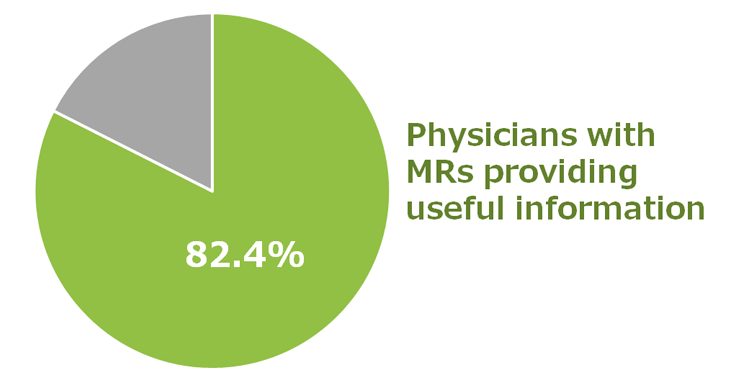
Over 80% of physicians said they have MRs who provide useful information.
Comparing the MRs and the digital contents by the type of information, MRs were more favored in "information about other facilities" and information about drugs. We can imagine that finding out the current situation of other facilities are not easy, while MRs can provide deep down local-based information. Information on drugs is very much related to their daily practice and many doctors want to hear about safety and effectiveness directly.
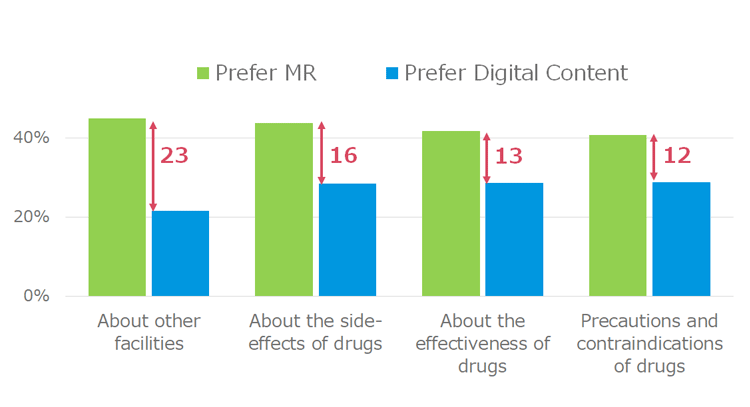
From the result of information types with few gaps over the channel preference, digital content seems to be better for invitations of events such as seminars and lectures. In addition, management and drug development status, those that are somewhat far from medical daily practice, also showed little difference. Doctors are always busy and getting their time is hard. They might even get called away suddenly during the appointment. So for these types of information, it would rather be not worth providing in direct communication unless there’s enough time, but you should try to provide these through digital channels.
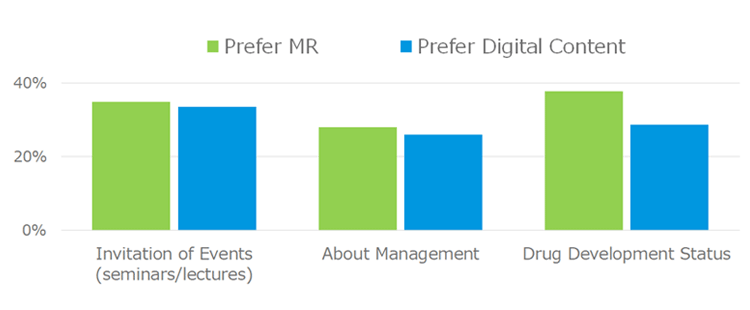
Comparing the two segments, General Practitioners (GPs; 19 beds and under) and Hospitals (HPs; 20 beds and over), both had a significant difference over the preference in getting information of other facilities from MRs or digital contents. HPs showed slightly more favorability in digital content. This can be described as their interests toward other facilities are what they have in common. Not only it will lead to cooperation between hospitals but they are surely eager to know about others especially when it comes to the adoption and use of new drugs. 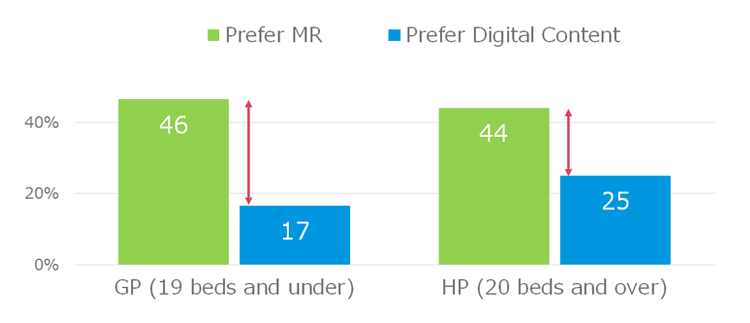
In the case of information on side effects, while GPs showed a great difference between the preference over MRs and digital media, HPs did not. This can be explained by their restrictive precautions over visits. HPs most likely are not allowed to have nonessential visitors compared to GPs. In addition, HPs can get information from their fellow doctors and pharmacists, but GPs cannot. Moreover, GPs prefer to know important information directly from MRs, as they have higher risks of encountering difficult cases in dealing with strong side effects in their own facilities, thus pushing the score to 50%.
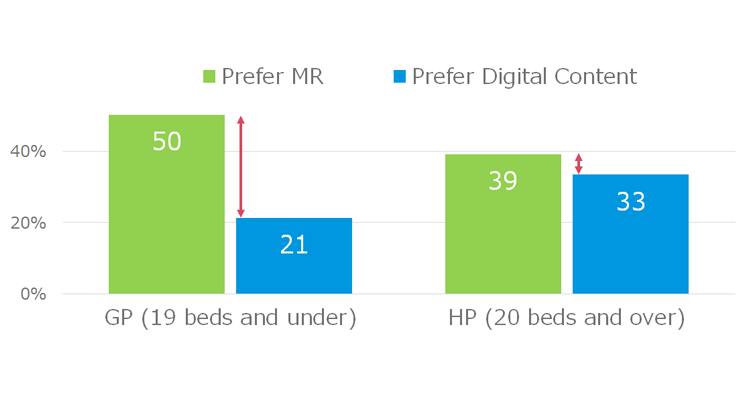
In-person VS Online
We compared the preference of how to provide information; in-person (face-to-face) or not in-person (online).
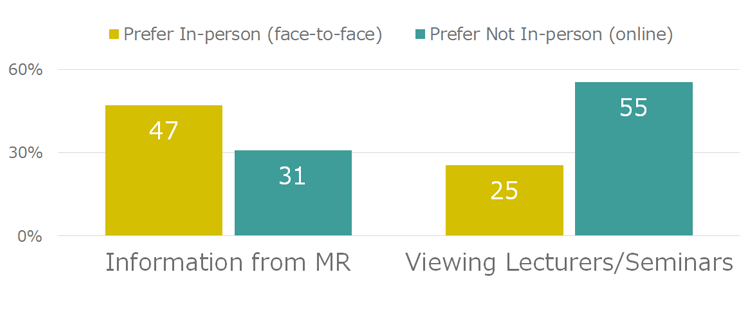
There was a large difference between getting information from MRs and viewing lectures and seminars. Nearly half preferred in-person meetings with MRs, on the other hand, half favored lectures/seminars online.
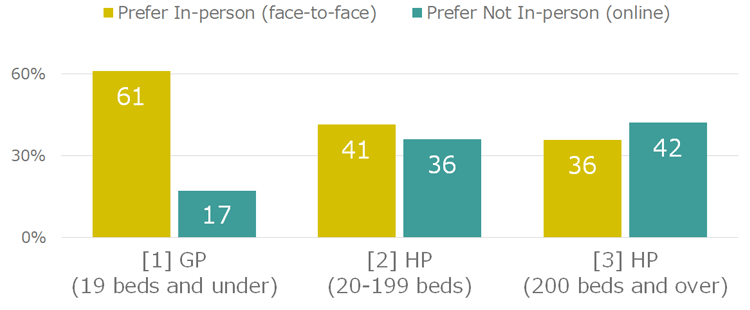
Although not every physician prefers in-person, but it varies by where they practice. Comparing by the following segments; [1] GP (19 beds and under), [2] HP (20-199 beds), [3] HP (200 beds and over), the larger the hospitals are, the more the preference of online is greater. While over 60% of GPs preferred in-person, the online preference was below 20%.
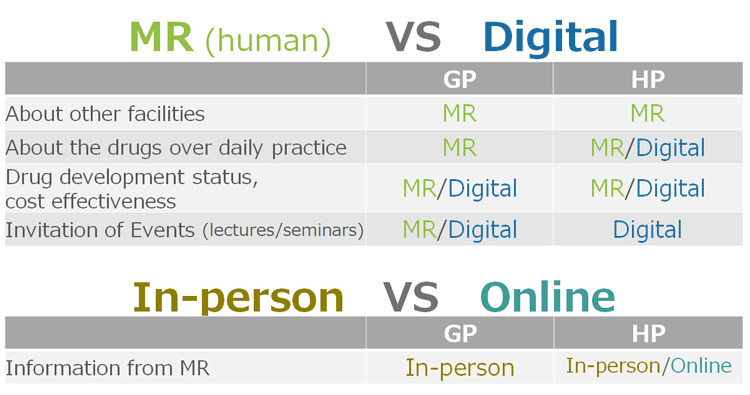
The table above summarizes the preferred channel for GPs and HPs by the type of information. GPs basically prefer face-to-face with MRs. In contrast, HPs prefer more digital content.
| GP | Conventional In-person Approach through MRs |
|---|---|
| HP | Digital contents + MRs (online) Approach |
It is indicated that GPs are still able to conduct face-to-face meetings as same as before the pandemic, so there are not many who prefer to go online. On the other hand, HPs have much strict restrictions on visitors under this situation, and while providing information online is increasing, many prefer to go online.
Whether online or in-person, the opportunities of meetings are decreasing, and while each meeting becomes more valuable, putting efforts to improve the quality and to make the best out of it is important for success.
Survey Methodology
| Survey Period | August 12th to August 17th, 2021 |
|---|---|
| Target | Physicians (internal medicine, endocrinology/diabetics, respiratory, dermatology, cardiology) |
| Area | Japan |
| Number of respondents | Total of 507 |
The survey in this article used the panel of Nikkei Medical, a comprehensive online media for healthcare professionals, run by Nikkei BP.
- More than 400,000 healthcare professionals in total
- More than 180,000 physicians
- More than 160,000 pharmacists
- More than one in two doctors and pharmacists in Japan is registered
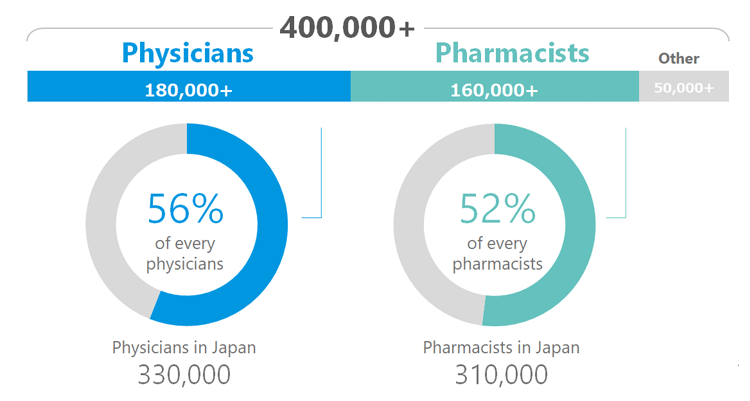
-
Feb/22/2021
-
Apr/12/2021
-
Feb/22/2021
please contact us below.

